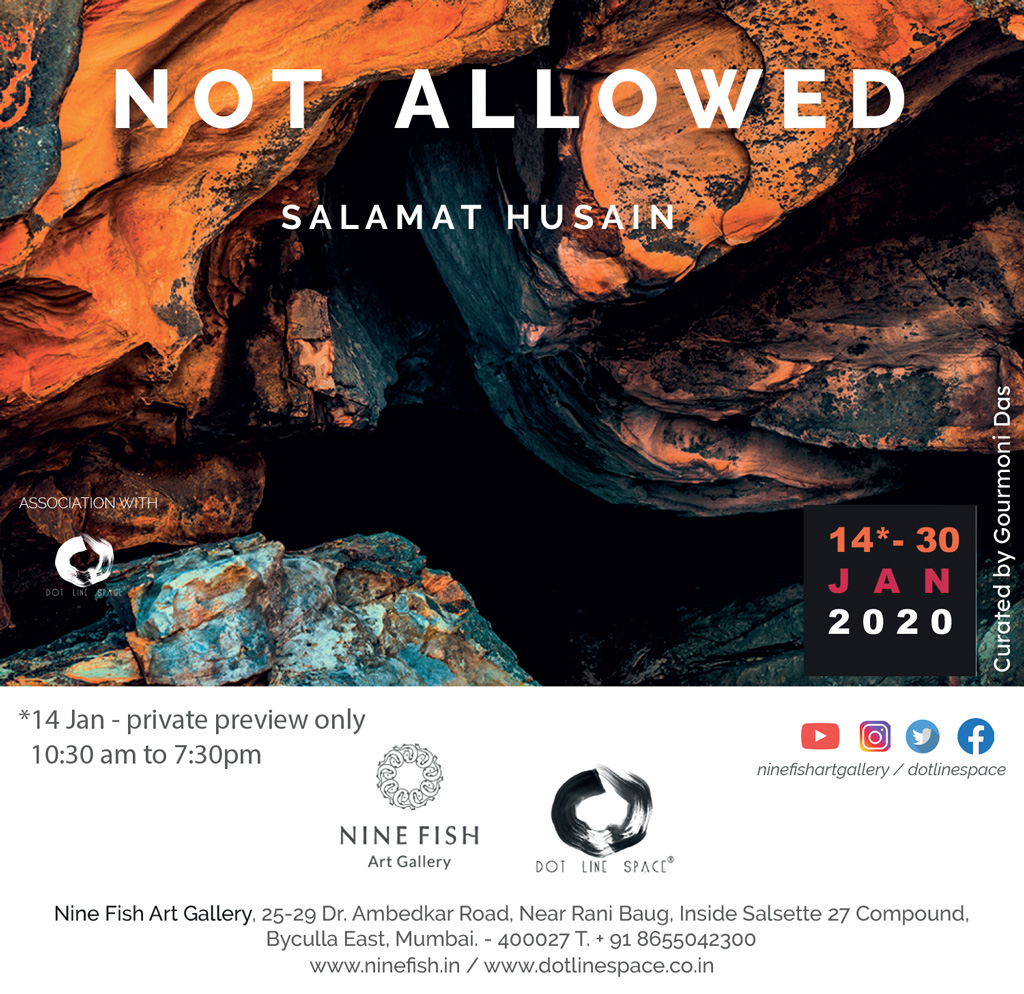
Not Allowed
Like sacred and secular spaces, areas on our globe are also divided between the those where we are 'allowed' and those we are 'not allowed'. More often than not we are 'prohibited' from entering certain spaces, specially the ones that are more interesting, that need to be recorded or photographed. Whenever you see the sing "Photography is Prohibited", do not click!
As a young visual artist taking on the task of curating Salamat's show - a show loaded heavily with his family's legacy and position in Indian art - I prefer to simply take the role of one viewing the pictures as visual works, each as an independent work of visual art, much as I would look at the works of any young painter or sculptor. Each photograph here is first seen by me as a visual entity in itself -devoid of the artist's legacy, and devoid of any political positioning within the world of photography, its history and its complex role in India - complete and speaking for itself. As a trained and practising painter, I stand before the works and try and view them as such, finally true to the long continuum of two dimensional art works, much as most of the world continues to see photographs - albeit naively - as extensions of paintings, continuing to fulfil the same roles to some extent at least. With the overlapping needs and promises to fulfil what art is expected to, the two mediums start off from and come together in at least these basics (notwithstanding many other pretensions) of form, aesthetics, pleasure . . . thus marking a point to start off the tangled world of curating a photography show!
Getting to know Salamat, long afternoons spent over coffee and viewing his works, understanding his take on this own travel and work, it finally emerged that he sees himself more as an Expressionist than a card carrying activist for the the medium of photography. Salamat spent most of his early years in the States and competed his education there in the visual arts. At the age of 16 Salamat entered the film industry by assisting his grandfather on the sets of Gajgamiini. Growing up surrounded by chaotic - and therefore instructive - art, Salamat learnt from and experimented with a variety of art forms: clay modelling, sketching, set making, painting . . . He mastered the art of lighting and light management, as well as compositions, in his various mediums. The trajectory of this show the evolvement of his art from his sketchbooks through the transformations of his travels to the final pictures. His realisation of the spaces of the self and the invasion of spaces, mainly the personal spaces that one creates around oneself as one moves and travels, in queues and seating configurations on flights, the sharing of temporary living spaces etc., are all explored in his art - the allowed and the not allowed. Which also leads to his choices of which spaces he allows and does not allow into the frames of his works, which of these spaces he chooses to share with us, and which keep out of the shared realm. How close does he want us as viewers to get to his spaces, how distanced he wishes his personal spaces to be.
Salamat's double exposure images are very interesting. Essentially as he says, "I try to capture as much as I can in a frame", the quest to entrap space is always on. But single exposure images are limiting finally to an artist like Salamat. The body he feels is often confined by its positioning in space, whereas the mind can wander into other spaces both real and imaginative. Thus he uses the double exposure trope often, capturing more than one space frames within the visual result - co-mingling of thought and matter so to say. Having done this, he insists that he leaves to rest to the audience to make of it what they will.
Curated by Gourmoni Das